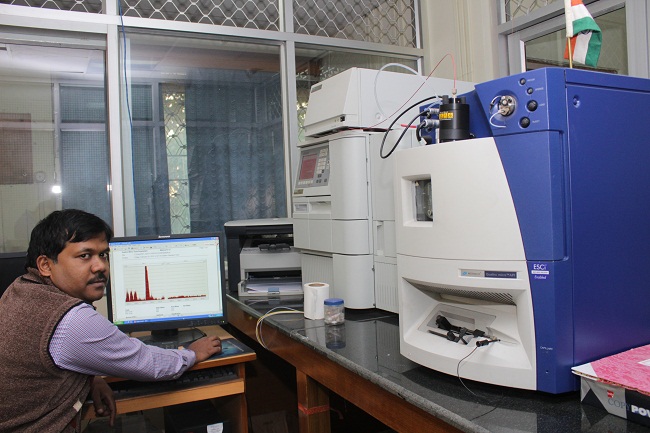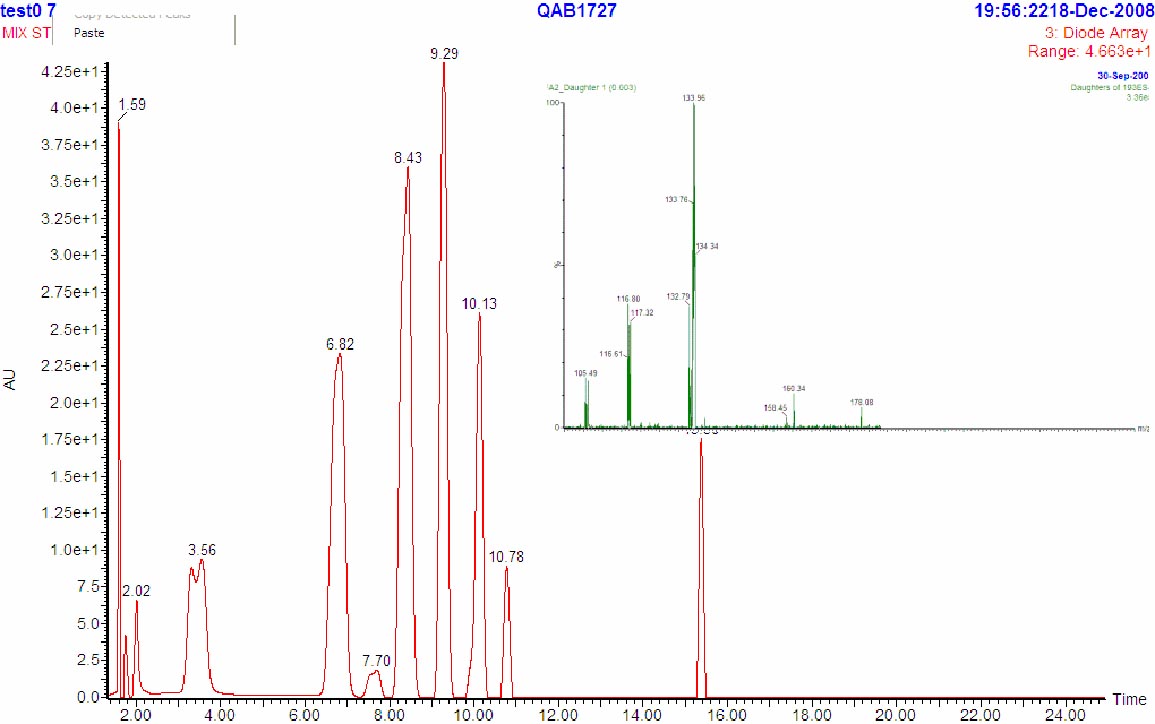- APPLY FOR SLOT
- Internal Users
- External Users
- SLOT BOOKING STATUS
Liquid Chromatography - MS / MS Laboratory

Phone : +91-3222-283760
Location : NB / FF / 10, CRF
Facilitator :
Prof. N D Pradeep Singh, Chemistry
Email: ndpradeep@chem.iitkgp.ac.in, Contact:+91-3222-282324
For Internal Users - Click Here to apply for Slot
For External Users - Click Here to apply for Slot
Objectives
To determine the accurate mass of several biomolecules and/or synthetic compounds with their diode array detection patern and structural information through fragmentation study. The high sensitive LC-MS/MS are routinely used for mass measurement of flavonoids, alkaloids, phenolics, peptides, drugs, pesticides, terpenoids, and some synthetic compounds with the mass range of 10-2000 Dalton.
People

Prof. N D Pradeep Singh
Facilitator
Chemistry
ndpradeep@chem.iitkgp.ac.in
+91-3222-282324
Equipment Details
Liquid Chromatography & Tendem Mass Spectrometry
Waters 2695 Separation Module with P.D.A. Detector and Automated Fraction Collector. Quattro microTM API with Mass-Lynx 4.1 upgraded software
Manufacturer details:WATERS, USA
Purchase source (funding):Institute
Year of installation: September, 2008.
Utility and Working Principal
Liquid chromatography - tandem mass spectrometry (LC-MS/MS, or alternatively HPLC-MS/MS) is a technique that combines the physical separation capabilities of liquid chromatography (or HPLC) with the mass analysis (parent and daughter ion) capabilities of mass spectrometry.
This LC-MS/MS is very much useful to determine the accurate mass of several biomolecules and or synthetic compound with their diode array detection pattern. The high sensitive LC-MS/MS are routinely used for accurate mass measurement of flavonoids, alkaloids, phenolics, peptides, drugs, pesticides, terpenoids, and some synthetic compound with the mass range of 10-2000 Dalton. Detailed structural information may be obtained by fragmentation spectra from MS/MS experiments which can be used for identification purpose, metabolic profiling, structure elucidation and peptide sequencing.
Mass spectrometers operate by converting the analyte molecules to a charged (ionised) state, with subsequent analysis of the ions and any fragment ions that are produced during the ionisation process, on the basis of their mass to charge ratio (m/z). Ion source is an important component for any kind of MS analysis, to ionize intact molecules, the ion source could be APCI (Atmospheric Pressure Chemical Ionization), ESI (Electronspray Ionization), etc. The choice of ion source also depends on the chemical nature of the analyte of interest i.e. polar or non-polar. The major advantages of this technology include sensitivity, specificity and precision as analysis is done at molecular level. Also, structural details of the analyte can be deciphered.
The impurities in the sample like any colloidal particle, sugar moiety, salt, buffers, etc. may cause ion suppression as well as damage the detector.
Sample Details

Sample Title
